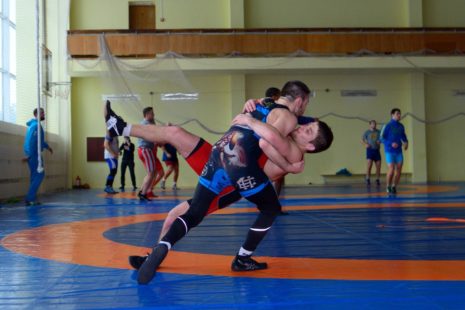Gymnasts can experience back pain due to a variety of factors related to the demands of their sport and the stresses placed on the spine during training and competition.
Some common reasons why gymnasts may experience back pain include…
- Hyperextension – Many gymnastics maneuvers require hyperextension of the spine, particularly in skills such as back bends, handstands, and back walkovers. Performing these movements repeatedly can place stress on the spinal joints, ligaments, and muscles, leading to discomfort or pain in the back.
- Repetitive Impact – Gymnastics involves frequent landings, jumps, and dismounts, which can transmit force through the spine and compress the vertebral discs. Over time, the repetitive impact on the spine can lead to wear and tear on the spinal structures, contributing to back pain.
- Overuse Injuries – Overuse injuries, such as muscle strains or stress fractures, can occur when gymnasts train intensively without sufficient rest and recovery. The repetitive nature of gymnastics movements can lead to overuse of certain muscles or spinal segments, increasing the risk of injury and back pain.
- Muscle Imbalances – Imbalances in muscle strength or flexibility between the muscles of the back, abdomen, and hips can affect spinal alignment and stability, leading to back pain. Weakness in the core muscles, in particular, can contribute to poor posture and increased stress on the spine during gymnastics maneuvers.
- Equipment Use – Gripping bars, rings, and other apparatus can place additional strain on the upper body and spine, particularly if proper technique is not maintained or if equipment is not properly adjusted to fit the athlete’s body.
- Poor Technique – Incorrect technique or form during gymnastics maneuvers can increase the risk of back injuries. For example, arching the back excessively during landings or failing to engage the core muscles properly can place undue stress on the spine and lead to pain or injury.
- Spinal Compression – The repetitive loading and impact forces experienced during gymnastics training and routines can lead to compression of the spinal vertebrae and discs. Over time, this compression can contribute to degenerative changes in the spine and increase the risk of back pain.
To address and prevent back pain in gymnasts, it’s important to prioritize proper technique, strength and flexibility training, adequate rest and recovery, and injury prevention strategies. This may include incorporating core strengthening exercises, stretching routines, and proper warm-up and cool-down protocols into training regimens, as well as seeking medical evaluation and treatment for persistent or severe back pain. Coaches and trainers should ensure that gymnasts have access to well-maintained equipment and receive appropriate supervision and guidance to minimize the risk of back injuries during training and competition.




